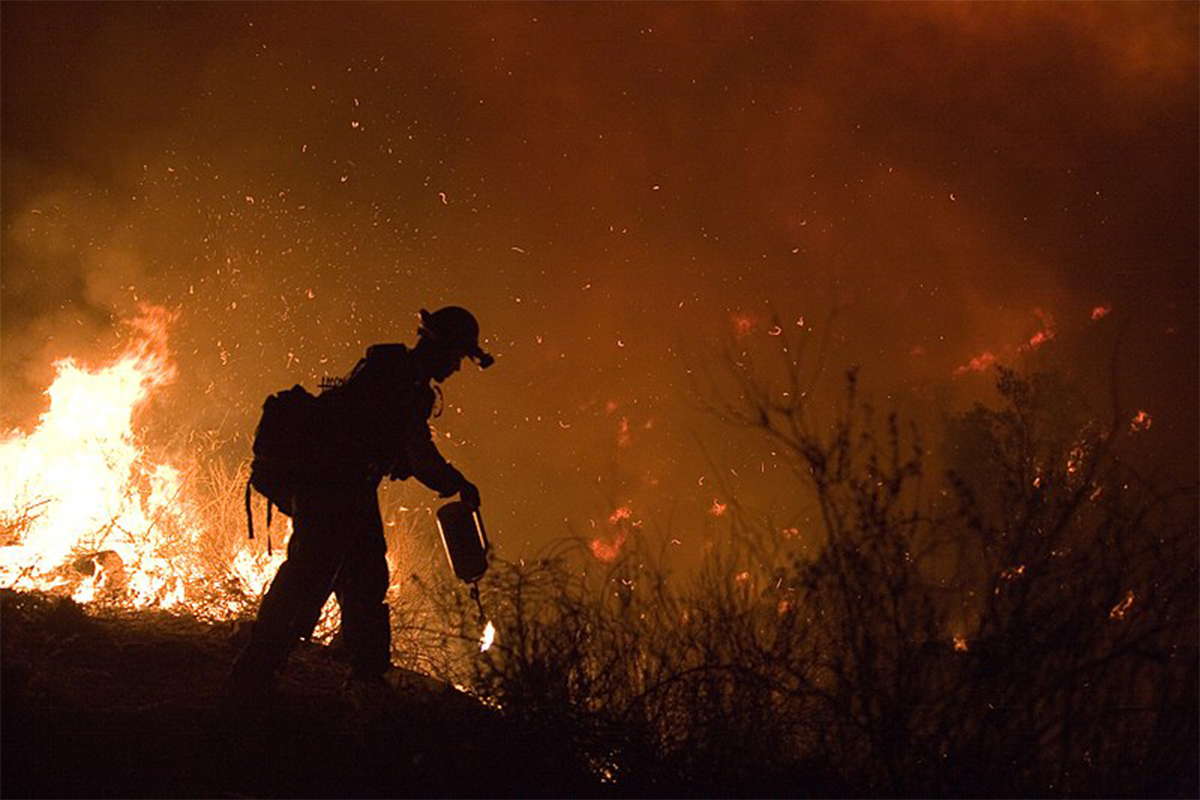The barrage of deadly wildfires burning up and down the state of California — and corresponding surreal skies and extremely unhealthy air — have destroyed schools and communities; displaced students, staff and their families; and interrupted long-planned-for returns to in-person instruction in many areas, a majority of them rural. Many of the largest blazes are expected to take weeks to contain.
The stark and desolate scenes have become all too familiar over the last several years, and at least two months remain in an already record-breaking 2020 wildfire season.
Just two years after the catastrophic Camp Fire ripped through Paradise and its surrounding communities, leaving 86 dead and thousands displaced, Butte County has encountered another deadly blaze not far from the site of 2018’s destruction. As of Sept. 15, the North Complex Fire had burned 269,218 acres and left at least 15 dead.
Among the numerous buildings destroyed are two elementary schools, Butte County Superintendent of Schools Mary Sakuma confirmed during a Sept. 14 update to the community. “As has been reported in the images seen across the globe, the school site is a total loss,” she said of Berry Creek Elementary, adding that Feather Falls Elementary is also a total loss.
Due to the unknowns within the community and unpredictable fire and wind activity, Sakuma said the Butte County Office of Education’s immediate goals are identifying students and staff who are displaced, and identifying the additional needs of its schools, students and staff.
“We have experienced a devastating fire before,” she said. “But we have learned from our past, we are prepared for our present, and we know that no matter how many times we face the flames, we will rise together from the ashes to build our future. We are Butte Strong.”
Destruction and continued wildfire threat widespread
In Siskiyou County near the Oregon border, the Slater Fire devastated the small town of Happy Camp, destroying 150 homes and killing two people. Half of the elementary school staff lost their homes, and administrators said they estimate that half of the 109 students are now homeless. Happy Camp Elementary School had started in-person classes just two weeks ago.
“It was going so well,” Abigial Yeager, a board member of the Happy Camp Union Elementary School District, told the Los Angeles Times. “It was doing so much for our kids, and it’s been ripped away again. I was trying to process all of the loss, and there’s another loss — the normalcy for the kids. It’s just chaos.”
Faced with the unpredictable Bobcat Fire raging in the hills above the San Gabriel Valley, parts of Pasadena, Altadena, Monrovia, Bradbury and Duarte continue to contend with evacuation notices. The resulting air quality was so poor that Monrovia Unified School District board member Maritza Travanti relocated to a coastal hotel so her daughters could continue distance learning.
The air quality has also greatly impacted many districts’ plans for distributing meals, while also impeding important outdoor activities at school sites and community parks and centers. While the smoke and haze has been widespread throughout the state, Fresno and Clovis have experienced particularly unhealthy air quality resulting from the Creek Fire in the Sierra National Forest. It even reached hazardous levels in some areas, such as Madera.
CSBA supports communities and establishes wildfire fund
CSBA is committed to supporting communities that have suffered damage from wildfires — in particular, the state’s public school students and those who work to serve and support them — and to helping our members navigate the impacts of these fires. From recent experience, CSBA knows all too well that the effects of wildfires are felt long after the fires themselves have been extinguished — impacts that are further exacerbated by the fight against the ongoing COVID-19 pandemic.
To that end, CSBA has set up a 2020 Fire Relief Fund for the purpose of generating ongoing support (via the American Red Cross) for those who have been directly impacted by wildfires. Please consider donating today, and spread the word to your friends, family, co-workers and greater community. As always, CSBA stands ready to assist members who have been directly impacted.
State wildfire resources for schools
-
- ADA funding and J-13A form: Due to the ongoing COVID-19 pandemic, the process by which an LEA may receive attendance credit due to an emergency is suspended for 2020–21. Therefore, a decrease in attendance that occurs in the 2020–21 fiscal year will not affect an LEA’s funding for 2020–21. However, any school district or county office of education (whether providing distance learning or in-person instruction) that has experienced lost instructional time due to the 2020 wildfires should still file a form J-13A with the California Department of Education to avoid a potential instructional time penalty for not meeting the annual instructional day requirement. Click here for info on the J-13A form and process.
- The California Department of Education Emergency Services unit is devoted to crisis response and recovery. They are eager to receive any and all information related to impacts on schools such as damage, access issues and more. Please provide reports and updates to: emergencyservices@cde.ca.gov.





